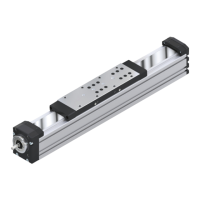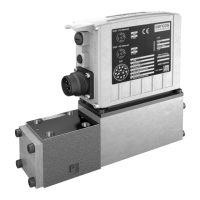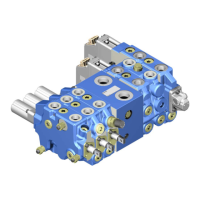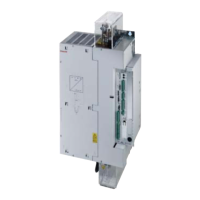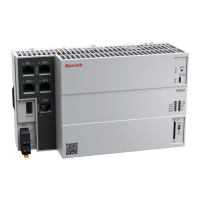36/54 Control blocks for mobile applications | Commissioning
Bosch Rexroth AG, RE 64025-B/2021-08-12
8�2 Initial commissioning
BoschRexroth defines initial commissioning as the initial testing and release of the
product.
It is recommend that points 1 up to and including 7 are adopted for the series
production of the hydraulic system.
Allow the control block to acclimatize for a few hours before commissioning
sothat no condensation water can form inside the housing.
Make sure that all electrical and hydraulic connections and ports are occupied
or plugged. Only commission a completely installed control block.
Avoid temperature shocks. The temperature difference between the control
block and the hydraulic fluid must not exceed 20°C. Otherwise, there isarisk
ofajammed spool. At temperatures below 0 °C, the control block must be run
until it is warm. In this respect, please also refer to chapter9.1 on page38.
Use only ahydraulic fluid that corresponds tothe following requirements:
You can find information about permissible hydraulic fluids in the respective
datasheet of the product, seeTable 1 "Required and supplementary
documentation" on page5.
During commissioning, monitor thetemperature ofthehydraulic fluid inthe
reservoir toensure that itlies within permissible viscosity limits.
To commission the control block for the first time, proceed as follows:
1� Completely fill the control block and the pilot circuit, if present, with
permissible hydraulic fluid (see datasheet).
2� Ensure the hydraulic supply for the control block.
3� If present, ensure the electrical supply for the control block.
4� Check the electrical connection of the control block.
Before carrying out initial commissioning or recommissioning, have a qualified
electrician or somebody being supervised by a qualified electrician check that
the electrical connection is correct.
Observe the instruction manual of the machine in which the control block
isinstalled.
5� Air bleeding the control block.
– Actuate the check valve a few times in each direction of actuation under
working pressure and at reduced speed before operating the control block.
This presses out any air remaining in the control block. This avoids mechanical
damage due to inadmissibly high acceleration of the hydraulic fluid and the
control spool and extends the service life of the control block.
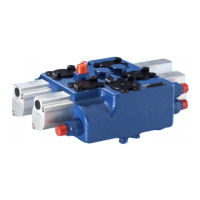
